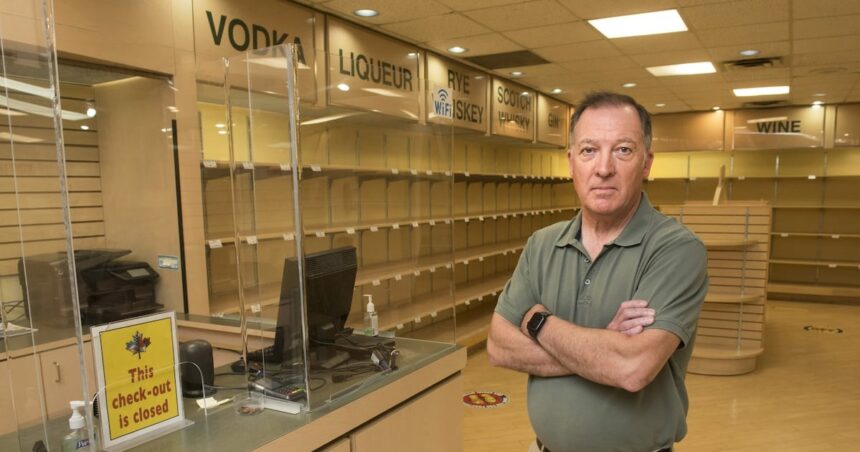Border duty-free retailers across Canada are facing what industry leaders describe as “a full-blown crisis” as plummeting traffic and changing travel patterns threaten the very existence of these once-thriving businesses.
At Blue Water Bridge Duty Free in Point Edward, Ontario, the scene is eerily quiet. Display shelves stocked with premium liquor, chocolates, and perfumes await customers who rarely materialize. Owner Tania Lee gestures toward the empty store floor, her frustration palpable.
“We’re down 47% in customer count since 2019,” Lee explains during a midday lull. “This isn’t just a temporary dip—it’s an existential threat to our entire industry.”
The crisis extends far beyond a single location. The Frontier Duty Free Association reports that land border duty-free stores across Canada have experienced a staggering 50% decline in revenues compared to pre-pandemic levels. With 33 stores nationwide employing approximately 1,500 Canadians, the repercussions are significant and far-reaching.
Barbara Barrett, executive director of the association, doesn’t mince words: “Our businesses are hanging by a thread. We’re seeing locations that have been family-owned for decades now contemplating permanent closure.”
The pandemic dealt the initial blow, but unlike other tourism sectors that have shown signs of recovery, duty-free shops remain mired in difficulty. Data from the Canada Border Services Agency indicates that while overall border crossings have rebounded to about 75% of pre-pandemic levels, shopping-oriented travel remains significantly depressed.
“Business travelers and essential workers are crossing again, but the casual day-tripper who might stop to pick up alcohol or gifts? They’re still not returning in meaningful numbers,” Barrett notes.
The challenges facing the industry are compounded by changing consumer behaviors. Digital shopping alternatives have proliferated, and younger travelers often show less interest in traditional duty-free offerings. Industry analysis from CO24 Business suggests that duty-free retailers must dramatically reinvent their business models to survive in the post-pandemic landscape.
“We’re caught in an impossible situation,” says Lee. “Our operating costs—rent, utilities, staffing—haven’t decreased, but our revenue has been slashed in half. Something has to give.”
The industry has approached both provincial and federal governments seeking relief measures. Proposals include temporary tax breaks, reduced regulatory fees, and marketing support to stimulate cross-border travel. Thus far, these appeals have yielded little concrete assistance.
Meanwhile, American counterparts face similar challenges. U.S. duty-free operators at northern border crossings report revenue declines averaging 42% compared to 2019 figures. The bilateral nature of the crisis underscores its connection to broader changes in North American travel patterns rather than country-specific factors.
Retail analysts from CO24 Sports and business sectors note that duty-free stores must evolve beyond their traditional reliance on alcohol and tobacco sales. Successful locations in Europe and Asia have increasingly emphasized luxury goods, local specialties, and experiential retail to attract younger travelers.
“The days of duty-free being synonymous with cheap booze are over,” says retail consultant Jennifer Korman. “Today’s travelers want unique experiences and products they can’t easily find online. Stores that can’t adapt to this reality simply won’t survive.”
For owners like Lee, the path forward remains uncertain. Having already reduced staff and operating hours, further cuts risk compromising the customer experience for the visitors who do arrive. The industry finds itself caught in a downward spiral—fewer customers leading to reduced services, potentially driving away even more patrons.
As border communities await the full return of international travelers, duty-free operators continue their fight for survival. The question remains whether these retail landmarks can weather the current storm or if they’ll become another casualty of our dramatically altered post-pandemic world.





















